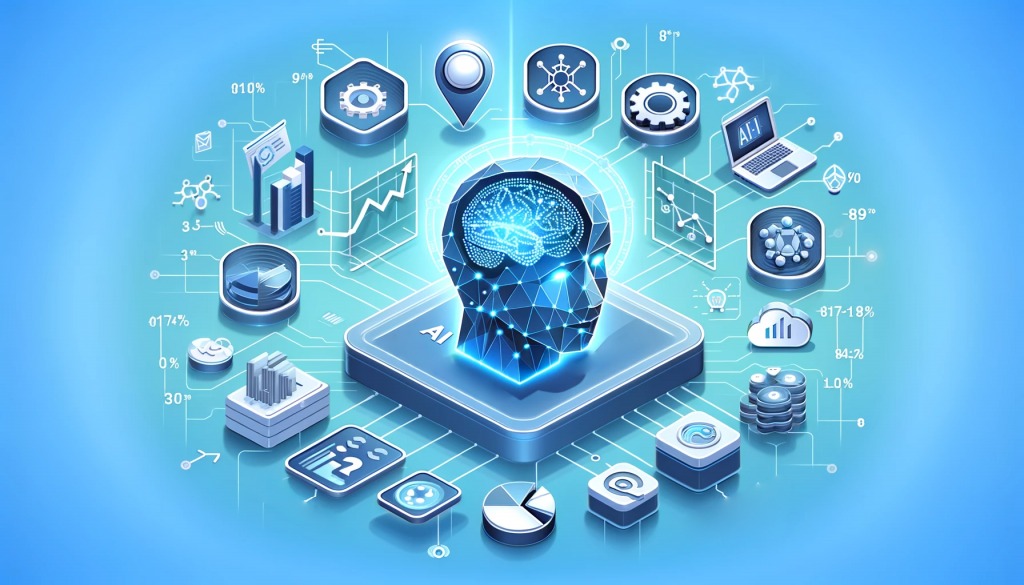Personalization has gradually become a determining factor in the field of digital marketing, allowing brands to strengthen customer engagement and build lasting loyalty. Generic approaches are no longer accepted by consumers as marketing strategies evolve. Therefore, marketing agencies like multiplayer and gamification.marketing is trying to provide a more interactive and personalized approach to connecting with customers. In fact, Accenture reports that 91% of customers are more likely to buy with brands that know customer preferences and offer personalized offers. The evolution of consumer expectations has led to a change in marketing approaches and artificial intelligence is helping to enable these changes.

There are several areas in which artificial intelligence is currently involved in marketing, namely customer segmentation, data analysis, content personalization and real-time customer interactions. With generally larger data sets, AI tools can predict behaviors, understand preferences and instantly deliver highly targeted experiences. McKinsey reports that companies that use AI personalization see their sales increase by 20% or more. The role of AI in getting companies to communicate with their audiences is becoming central.
Although the journey to highly personalized marketing experiences has been gradual, it began with the success of loyalty programs and email campaigns. These first ideas segmented audiences based on basic data such as purchase history or demographic data, which served as the basis for future improvements. They did not offer customers an individual approach and a personalized experience. But by automating the personalization process, AI has completely changed that and has allowed companies to take their marketing efforts to the next level in terms of relevance.
Due to the ability of AI to process and analyze massive amounts of data, machine learning and predictive analytics have allowed brands to overcome traditional segmentation. With AI, brands do not categorize customers according to general characteristics such as demographics or age, but rather analyze their specific actions and preferences in real time. In sectors such as retail and e-commerce, such a personalized approach is crucial. We can see this in the examples of Amazon and Netflix that approach marketing in a more scalable and personalized way, transforming the way brands interact with customers.
For example, Amazon’s recommendation system that monitors customer behavior reports 35% of the company’s total revenue, showing how AI has an impact on personalized customer engagement.
Moreover, customization is not limited to product suggestions. It facilitates dynamic interactions, from the first visit to a website to subsequent communications after the purchase. With each interaction, AI systems learn from customer behavior and refine their predictions, which makes future interactions more relevant, strengthens customer relationships and increases lifetime value.
The results are convincing as AI progresses and is increasingly integrated into marketing. Companies that use AI for personalized marketing have seen their profits increase by 15%, and AI-based email campaigns have 41% higher click-through rates with 29% higher conversion rates than non-personalized campaigns. These figures demonstrate how AI can have an impact on some of the most important indicators associated with marketing: customer engagement and conversion.
Types of AI-Driven Personalization
At scale, AI-based personalization has changed the game for brands interacting with customers by providing personalized content, recommendations and personal interaction. Each of these strategies is based on different AI models, which offer different ways of talking to customers.
Image source
a) Predictive personalization
Predictive personalization uses predictive analytics to anticipate customer needs, actions, or behaviors before they occur. Using past data to predict future behavior helps brands create highly relevant content, product suggestions, marketing messages, etc. Predictive personalization has already shown its potential to reduce customer churn, improve product recommendations and boost sales.
Reduce Customer Churn Rate
Predictive models are particularly effective when it is necessary to identify customers who are about to leave a platform or stop interacting with a brand. For example, Netflix uses predictive analytics to track viewing habits and behaviors as well as engagement patterns in order to alert subscribers to the risk of canceling their service. Through AI-based personalized recommendations, Netflix reduced customer churn by 5%, saving customers billion in annual subscription revenue.
Predictive analytics is also used by companies such as Vodafone and AT& T in the telecommunications sector to detect customers at risk. The analysis is based on usage trends, payment behaviors and customer interactions with customer service. Studies show that companies that apply these strategies can reduce churn rates by up to 40%.
Improvement Of Product Recommendations

Predictive analytics in the retail sector allows companies to analyze outdated customer behavior and use the data to predict the products that interest them and/or that they are inclined to buy. Amazon, for example, uses predictive models to analyze its customers’ purchase history and browsing behavior, and then generates personalized product recommendations. As a result, it contributes significantly to Amazon’s revenue — 35% of Amazon’s sales are made up of these AI-powered suggestions.
Walmart also integrates predictive personalization by analyzing customers’ shopping and online browsing habits to offer personalized product suggestions and targeted promotions. Quality data on customer preferences has helped to increase online and in-store purchases.
Boost Sales In All Sectors
The use of predictive personalization has been shown to significantly increase sales in all sectors. A McKinsey study has revealed that companies that use predictive analytics in their marketing observe a 10 to 15% increase in their sales. Predictive models come from industries such as retail, e-commerce, financial services and even healthcare, as these tools help companies offer more personalized services, improve customer engagement and conversions.
Predictive personalization is also useful in the travel and financial services sectors. In the field of travel, platforms such as Expedia use predictive models to recommend flights, hotels and activities based on user behavior, while financial institutions use predictive analytics to offer personalized investment advice or loan products based on a client’s financial profile.
b) Dynamic customization
Dynamic personalization refers to real-time personalization that adapts to the user’s actions, preferences and interactions with an advertisement. This type of personalization is particularly effective in digital marketing channels, since content, offers and recommendations can be instantly adjusted there to match the user’s behavior and preferences.
Dynamic personalization in digital channels

Dynamic personalization can be effectively used in digital marketing because it allows a brand to modify its website content, email campaigns and advertisements in real time. Spotify is one of the examples of the effectiveness of real-time personalization. Spotify offers personalized playlists, song recommendations and a user interface that are updated in real time based on users’ listening habits. Spotify, with more than 433 million users, shows how customer-centric AI can help increase revenue, engagement and user experience through AI-based personalization.


